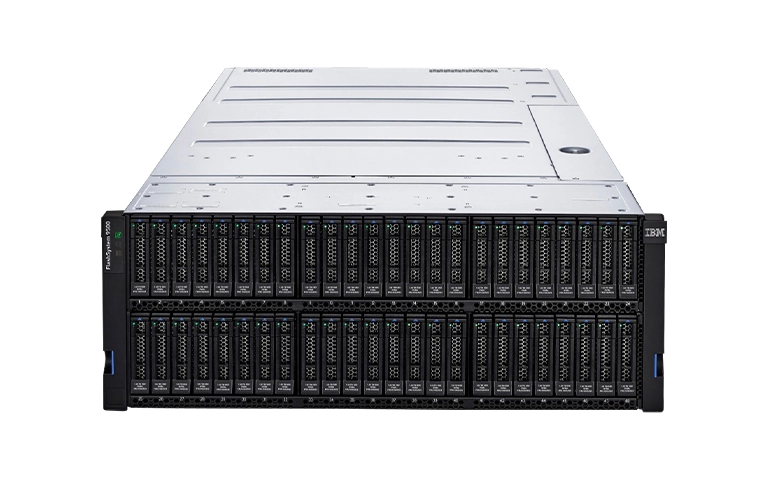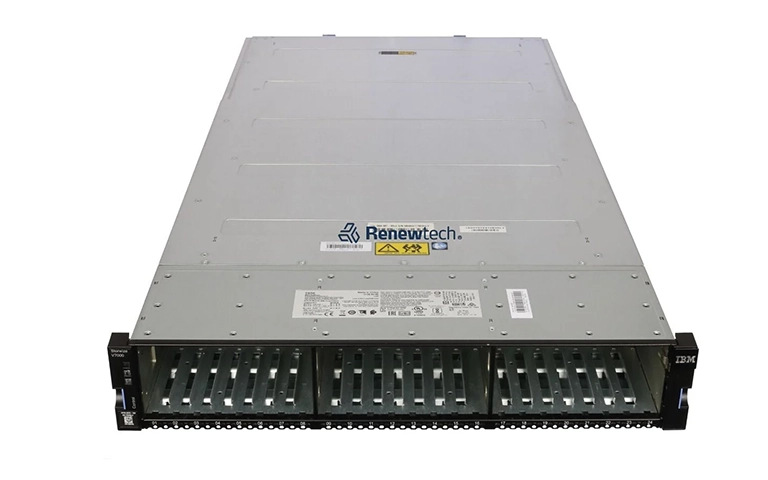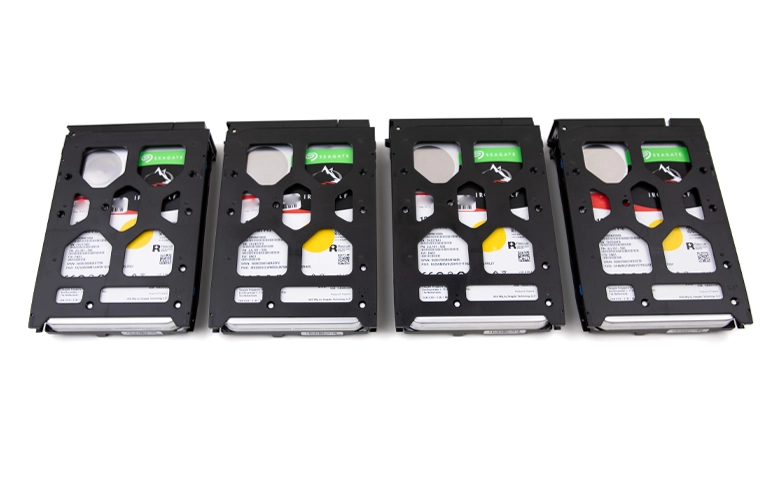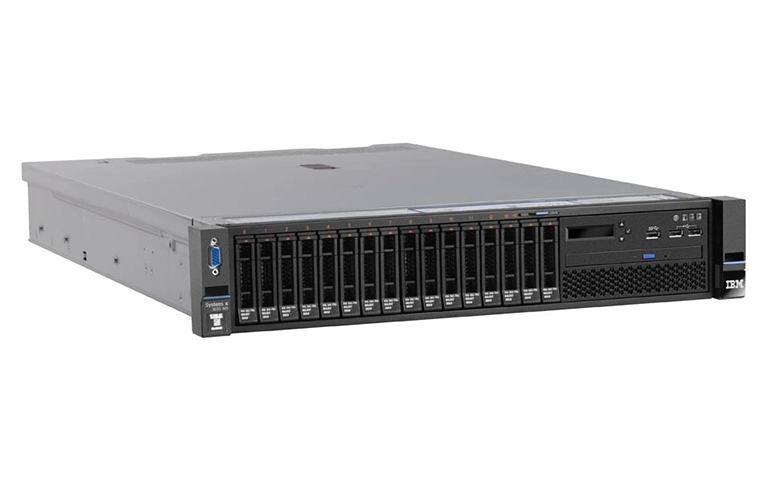The IBM Storwize V3700 is an enterprise-class SAN solution engineered for performance, virtualisation, and scalable storage management.
When a system-wide degradation impacts all drives, recovery becomes significantly more complex, largely due to IBM’s proprietary virtualisation architecture layered on top of RAID technology.
In this instance, our engineers at RAID Recovery Services successfully retrieved critical business data from a Storwize V3700 array where every drive was degraded and inaccessible through the management console.

Background: IBM Storwize V3700 Failure
A mid-sized financial services firm reached out after their IBM Storwize V3700 SAN began reporting multiple drive alerts and soon lost access to all storage pools. Their internal IT team observed the following:
All drives appeared as degraded in the V3700 management interface
VMware ESXi hosts showed all datastores as offline
Controller reboots and drive reseating attempts failed
No recent backup existed for the affected volumes
The storage array supported several mission-critical workloads, including:
Virtual machines (VMFS volumes)
SQL database environments
Financial data and user directories
With the risk of irreversible data loss, the drives were promptly removed and shipped to our laboratory for professional evaluation.
For details about our specialised SAN recovery expertise, including support for IBM Storwize systems, explore our SAN Data Recovery Services page.

Understanding IBM Storwize Architecture
The IBM Storwize V3700 does not rely solely on traditional RAID. Instead, it incorporates an additional abstraction layer known as RAID virtualisation, which aggregates physical disks into storage pools and allocates virtual disks (vDisks) from them.
Key architectural complexities include:
Multiple layers of RAID (RAID 5 or 6 groups within pooled storage)
Data striping distributed across numerous drives
Dynamic provisioning with thin volumes
Proprietary metadata and mapping structures
While this design delivers resilience and performance in live systems, it presents significant challenges during recovery when removed from native IBM hardware.
If you are facing a failure within a virtualised environment or dealing with corrupted VMFS volumes, learn more about our virtualisation data recovery solutions for complex SAN infrastructures.

Initial Evaluation: Drive Status and Damage Assessment
Our lab received 24 SAS drives (2.5″, 10K RPM) from the client’s IBM Storwize V3700 enclosure.
Assessment results:
8 drives displayed SMART warnings with reallocated sectors
3 drives showed critical read errors or signs of imminent failure
13 drives were healthy but out of sync due to a controller-level malfunction
RAID metadata and virtualisation maps were inconsistent
Because the entire array relied on IBM’s proprietary controller software, it could not be reconstructed using standard RAID utilities.
Fast turnaround times for business-critical data
Recovery Process: Virtual RAID Reassembly and vDisk Extraction
Following receipt of the drives from the IBM Storwize V3700, our engineers executed a structured and risk-controlled recovery procedure to ensure complete data integrity throughout the process.
Each drive was cloned using forensic-grade duplicators to create verified sector-by-sector images. Drives containing bad sectors were stabilised before multiple adaptive read passes were performed to maximise data capture.
Our engineers manually analysed low-level disk headers to determine:
RAID group parameters such as stripe size and parity rotation
Disk order and virtual pool structure
vDisk mapping and logical volume definitions
Through detailed hex-level inspection and metadata interpretation, the RAID 5 groups within each storage pool were successfully reconstructed.
Once the virtual RAID pools were emulated, we proceeded with data extraction and validation:
MFS volumes containing VMware virtual machines
A standalone NTFS volume hosting archived financial records
SQL Server database files (.MDF/.LDF) recovered directly from the raw vDisks
All recovered datasets were exported into mountable disk images and verified for structural consistency and completeness.

Recovery Results and Client Delivery
Once the IBM Storwize V3700 data recovery process was completed, our team carried out an extensive verification procedure to ensure full data integrity:
Confirmed virtual machine boot functionality across all recovered VMware instances
Validated SQL database consistency to ensure application-level operability
Performed file-level integrity scans to identify and resolve any data corruption
Hosted a secure remote verification session with the client’s IT lead for final confirmation
The client verified that all mission-critical files and virtual machines were successfully restored. The recovered datasets were then delivered on encrypted external drives, ready for reintegration into their newly configured storage infrastructure.
Recovery Summary
System: IBM Storwize V3700
Total Drives: 24 (SAS, 10K RPM, 600GB each)
RAID Layout: Multiple RAID 5 arrays with IBM virtualisation layer
Failure Mode: All drives degraded following controller and software malfunction
Recovery Duration: 7 business days (expedited service)
Recovery Success Rate: 99.2% of client-requested data successfully restored
Lessons and Recommendations for IBM Storwize Users
To minimise the risk of data loss within enterprise SAN environments, Storwize administrators should adopt the following best practices:
Maintain independent backups of all volumes — snapshots alone do not constitute a reliable backup strategy
Monitor SMART attributes across all drives using IBM CLI tools to detect early signs of degradation
Avoid forced rebuilds or pool deletions after drive alerts without professional diagnostics
Replace deteriorating drives proactively, rather than waiting for controller-level warnings
Implement multi-site replication or object-level backups for critical business data to ensure recoverability

Trust the experts with proven results
Need Help with IBM Storwize Recovery?
If your IBM Storwize V3700 or another enterprise storage platform has suffered a multi-drive failure, contact RAID Recovery Services for professional assistance.
We specialise in complex SAN and NAS systems featuring proprietary RAID architectures, including:
IBM Storwize and DS Series
Dell EMC and EqualLogic
NetApp ONTAP
HPE 3PAR and Nimble
Our secure laboratory facilities and highly experienced engineers are equipped to restore even the most intricate virtualised storage environments with precision and reliability.